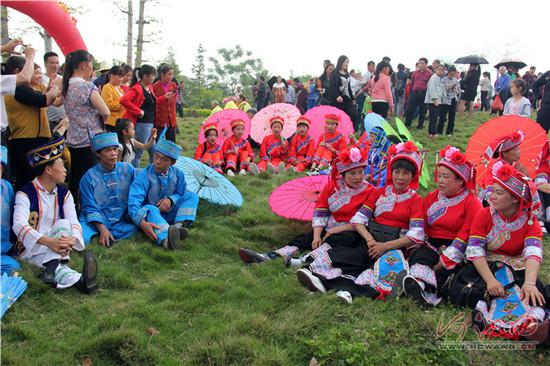Folk songs of the Mulam ethnic group

Members of the Mulam ethnic group wear traditional clothing and sing folk songs together. [Photo by Liao Langlang/hcwang.cn]
The folk songs of the Mulam ethnic group are collectively created by the Mulam people. They reflect their work and life, and are sung from generation to generation. They are used to spread their history, culture, work knowledge, and interpersonal communication. Oral singing and handwritten songs are the main methods that have passed down the folk songs to today.
Located in the northern part of Guangxi Zhuang autonomous region, Luocheng is the only Mulam autonomous county in the country and the largest settlement area for the Mulam ethnic group. The folk songs are widely sung in Mulam inhabited regions, mainly covering 11 villages and towns in Luocheng, such as Dongmen and Siba.
The folk songs of the Mulam ethnic group can be divided into two types. One is mostly based around historical figures, hero stories, and folklore, while the other is based on improvised singing with no fixed lyrics, spanning songs about love, etiquette, and customs.
The folk songs of the Mulam ethnic group have various forms. To date, there are 44 kinds of song names and 90 sentence patterns, mainly with a four-sentence style, a flexible number of words in each sentence, as well as two-sentence rhymes.
The songs are known for their simple techniques, vivid language, vast imagination, and excellent metaphors. They accumulate the understanding, practice, and life experience of the Mulam people on society and nature, reflecting the national character and the natural aesthetic characteristics of the Mulam.
In May 2010, the folk songs of the Mulam ethnic group were included in the third batch of autonomous region-level intangible cultural heritage representative projects in Guangxi.














